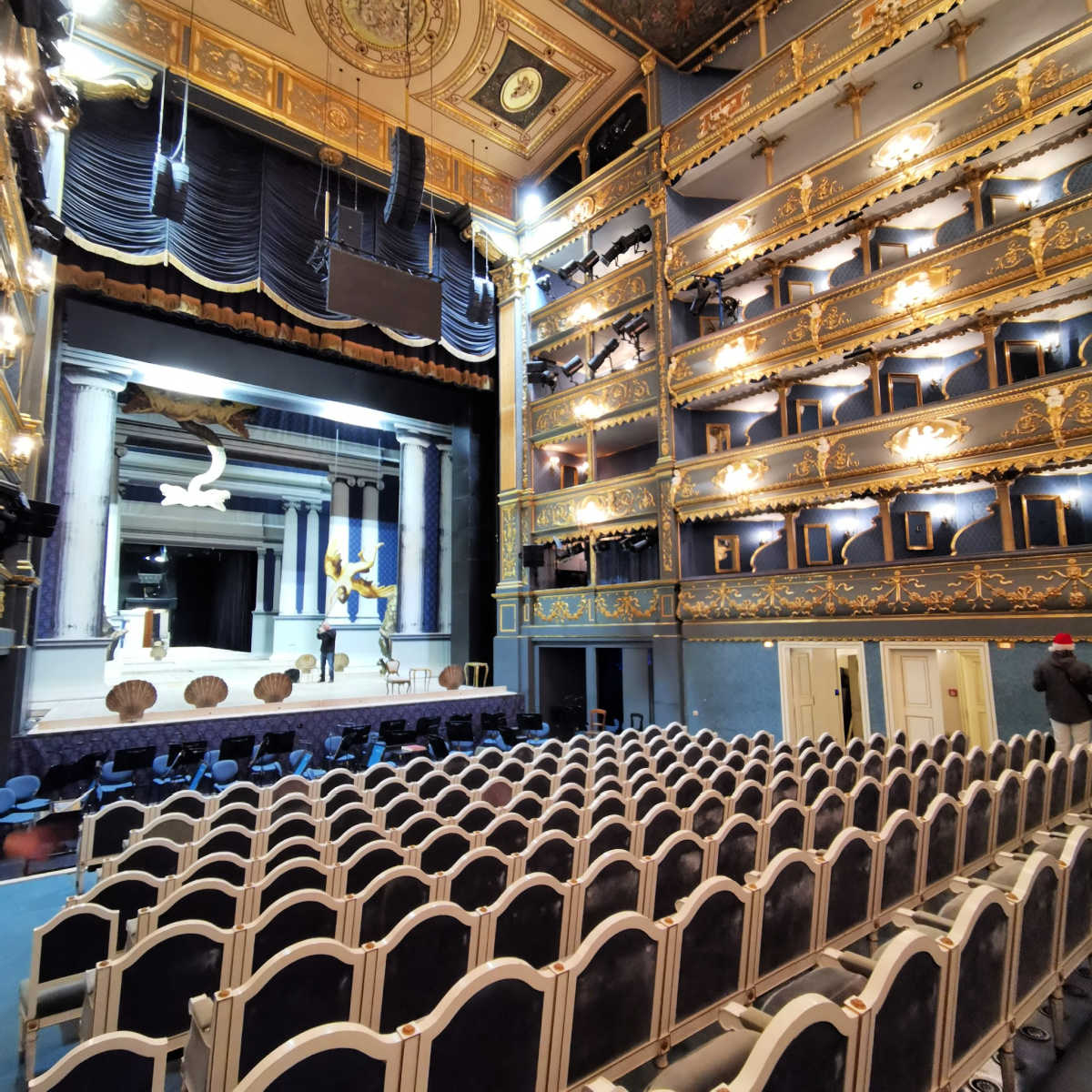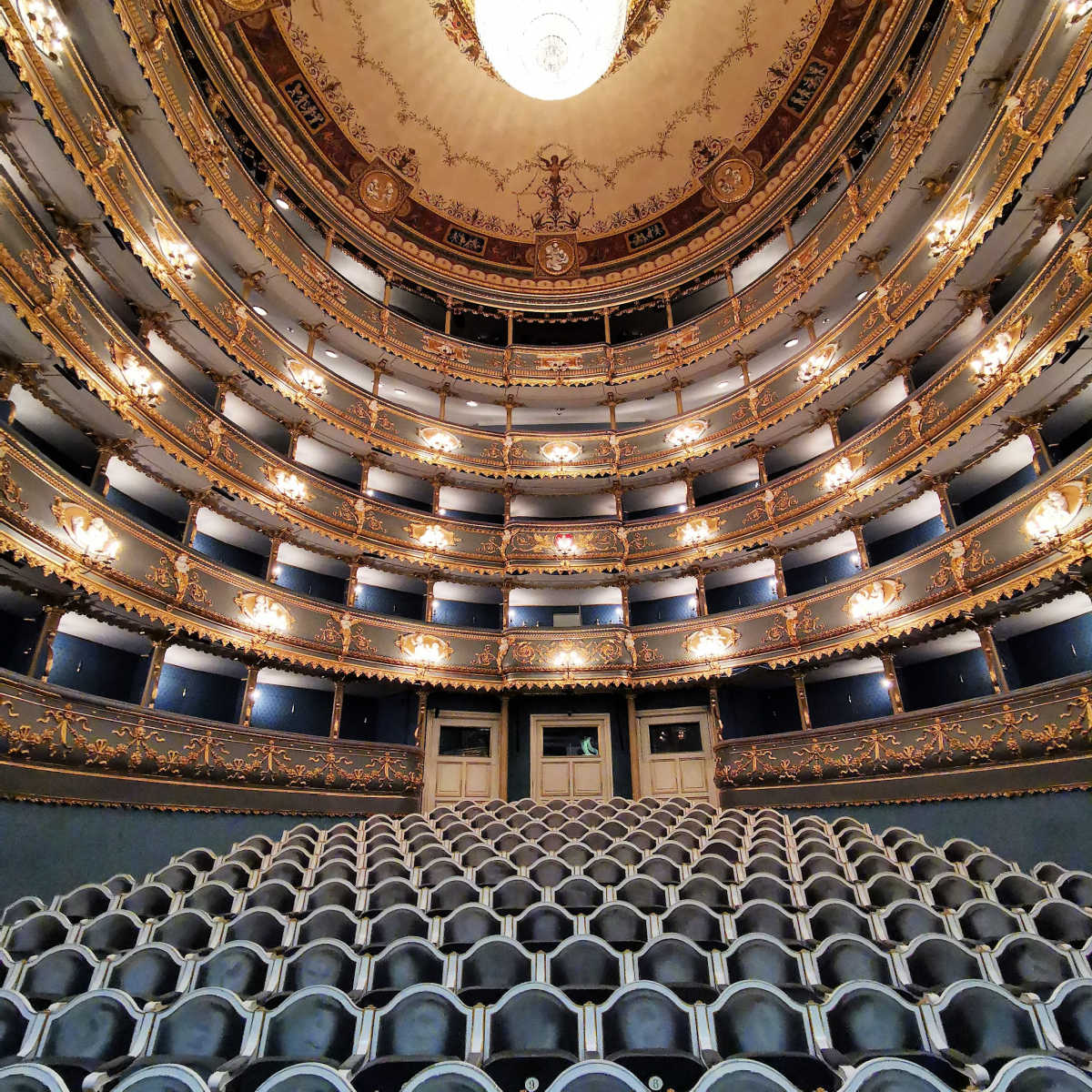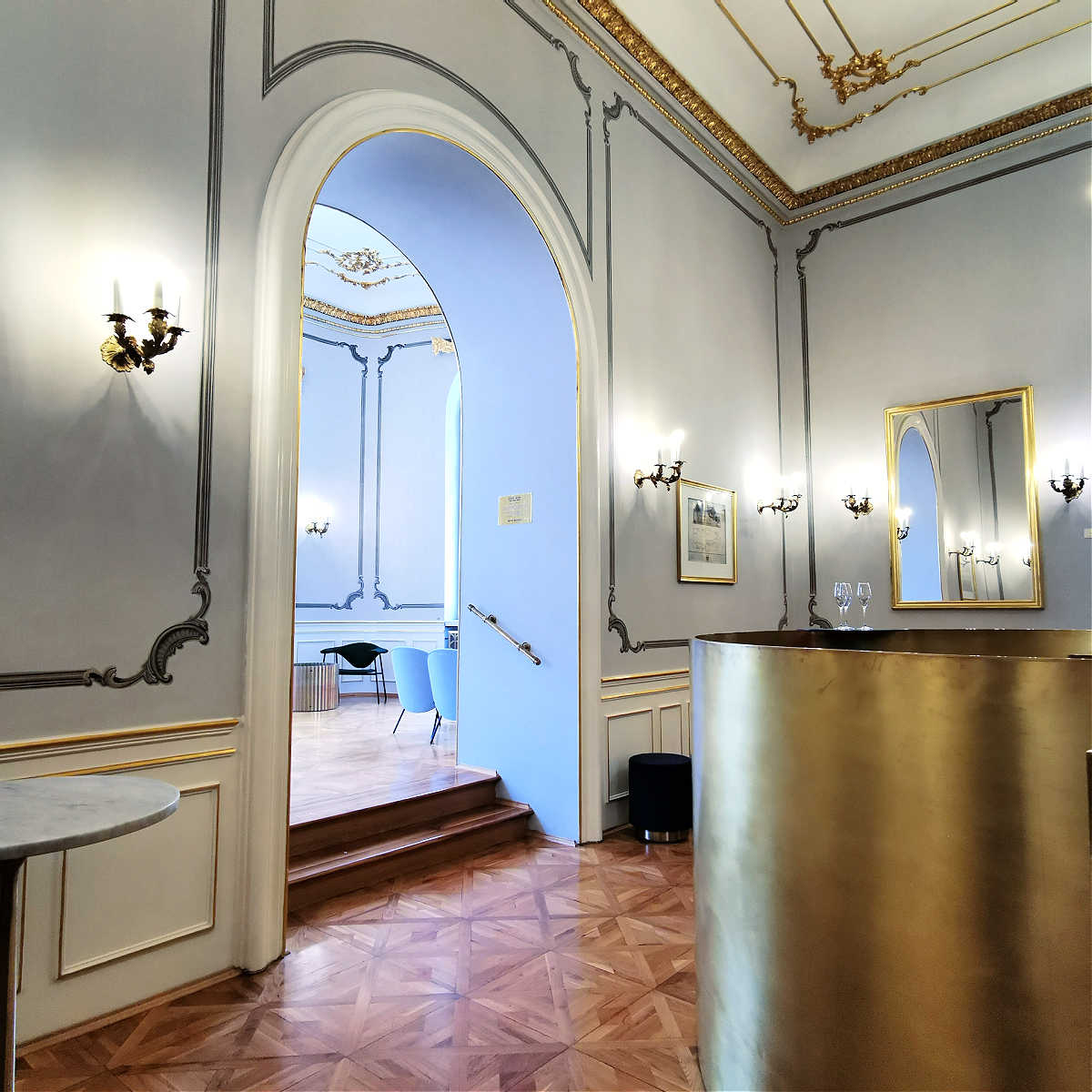The Estates Theatre is a fairly large building somewhat squeezed in the street behind the Charles University Buildings and the Old Town Square. And here is an interesting fact about Prague – the Estates Theatre is one of the oldest theatres in Europe that is still in use and it’s closely linked to Mozart during his many stays in Prague.
I used to go there regularly as a student to see the plays, usually buying a standing ticket for 5 CZK when they were available and watching any play that was on that evening!
Recently I visited the theatre as a part of a guided tour, which was a really lovely way to see the theatre quiet, empty and still.
During our tour, the theatre staff were getting ready for that night performance of Mozart’s Magic Flute and one stage manager was fixing a giant cut out of an angel on the stage.

The Estates Theatre History
The theatre was built towards the end of the 18 century and opened in 1783 with the performance of the tragedy play Emilia Galotti by German playwright G.E. Lessing.
It was designed by the architect Anton Haffenecker and founded by the noble aristocrat Frantisek Antonin Count Nostitz Rieneck. The theatre was built in the Neoclassical style and is one of the few European theatres that has not been altered much since it was built.
The theatre was intended mainly for German public, which is why most plays were by German authors or were performed in German language. It was one of the main reasons, why National Theatre was founded later on in the history, as there were no Czech speaking theatres in Prague at the time.
The theatre’s motto ‘Patriae at Musis’ (To the native land and the muses) refers to the Germany, not Bohemia.
The theatre had several names through it’s history. It was called the Royal Theatre of Estates in 1798, around 1862 renamed to Provincial German Theatre, between the years 1920-1948 the theatre was called the Theatre of the Estates. I’ve known the theatre as Tylovo Divadlo – Tyl Theatre (J.K. Tyl was a Czech playwright and dramatist), which is the name the theatre had from 1948 to 1990.
From 2000 the theatre is again called the Estates Theatre (Stavovske Divadlo).

Fun facts about the Estates Theatre
Count Nostic apparently had a miniature of the theatre built in the garden of his summer chateau retreat.
The original building was one story/level lower than today’s version. The top story was added in 1834.
During the building’s re-construction in 1834, the interior was decorated in red, white and gold colours (if you visit the theatre today, you’ll see that the interior is blue, white and gold).
If you want to see the original red, white & gold interior, check out the Milos Forman’s film Amadeus. This film (about Mozart’s life) captures a lot of the theatre interiors before it was changed to the current colour scheme.
The original capacity was 1000 seats, but today’s capacity is only 659 seats. This is because over the years, the seats become large (and more comfortable) and also taken out from places where people would have had a restricted view (like behind a pillar).
Although the theatre was extended and altered several times over the course of it’s history, there is not enough space to keep all the props and theatre sets.
These are stored in warehouses outside the centre of Prague and brought in by large truck cars when they are needed. This is quite often as most plays are on the rotation scheme, being shown 1-2 days at a time and then not until the next month.

The Estates Theatre and Mozart
The theatre has a very close link to Mozart and because of that, the theatre always has at least 1-2 operas by Mozart in it’s regular offering.
Mozart arrived in Prague in 1787 after his opera Le Nozze di Figararo – The Marriage of Figaro failed to win the audience in Vienna. On 20 January 1787 Mozart himself conducted this opera in the Estates Theatre and this time, it was a great success. I’m guessing that the Mozart’s saying ‘My Prague people understand me’ originates from this.
Because the opera was such a success, Mozart decided to create an opera just for Prague people. Mozart’s new opera Don Giovanni had it’s opening only few months later on the 29 October 1787 and Mozart himself again conducted the opera. As with the previous opera, it was a great success!
The Estates theatre saw another opening of Mozart’s opera – this time it was the ‘La Clemenza di Tito, The clemency of Titus’ in 1791 to celebrate the coronation of the king Leopold II. Sadly this opera wasn’t as successful as the previous ones.

What to see at the Estates Theatre
The Estate Theatre program includes plays, operas and ballets and there are usually at least 1 or 2 operas by Mozart.
Tickets start from 100-250 CZK for standing tickets and go up to 350 CZK for plays and 1300 CZK for operas and ballets.
Whilst most of the performances are in Czech (or original language – such as Italian for some operas) quite a few performances have subtitles in English (or French).
These are usually above the stage, so it’s worth getting tickets on the balcony or little bit higher up, so that you don’t need to keep looking up to read the text and then down again to see what’s happening. Some operas have also Czech subtitles (as well as English) and I have to say, I’m always super grateful for those!
Theatre Guided Tours
Guided tours are a great way to see the theatre during the day and explore it with a dedicated guide. Tours are in Czech and also in English, so just select the right language when booking.
If you are wondering how I managed to take a photos of an entirely empty theatre – this is the reason!
Where to eat & drink near the theatre
If you are on the budget, the self-service traditional Czech food canteen – Ceska Kuchyne Jidelna is on the same street few houses down. They usually open until 8 pm, so it’s perfect for pre-theatre dinner.
Location
Zelezna Ulice, Prague 1, Old Town
How to get there
Since the theatre is located in the historic centre of Prague, there are no trams or bus stops nearby. The nearest underground (metro) station is Mustek and then it’s about 10 minutes walk.
STAY IN TOUCH
Hope this blog post inspires you and as ever I’d love to what you think! Let me know in the comments below or catch up with me over on Instagram.
Magdalena
This blog post was originally written on 25 April 2022 and last updated on 4 June 2024
PIN TO KEEP FOR LATER
